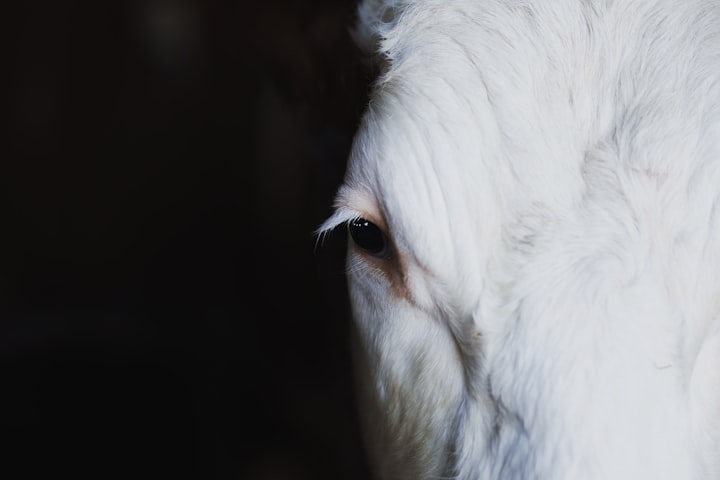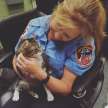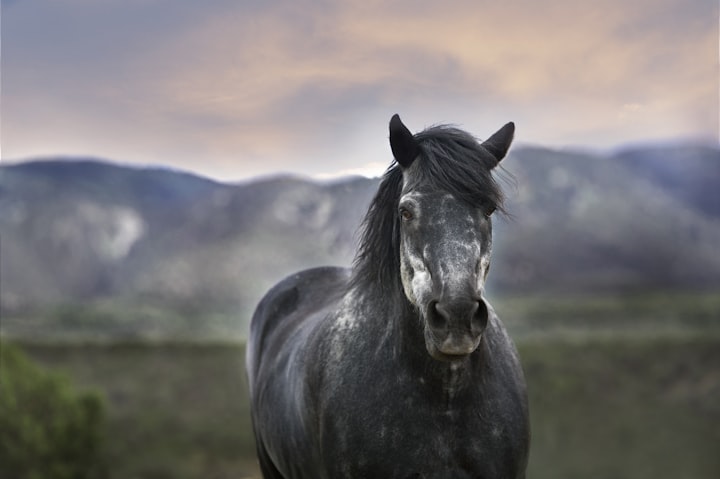They Don't Grow Old
A young girl's idyllic summer on her uncle's farm

In years past, a young Elsa would lament the loss of children’s games spent under the sprinklers at the municipal park. Elsa was sure her young cohorts would be having the time of their lives getting sundaes from roving ice cream trucks and attending dinosaur events at the children’s museum while she would be bored and alone visiting relatives abroad.
But that summer, a much older (11) and wiser Elsa understood her break from grammar school academia was going to be better than sprinkler games and dinosaur events. Elsa’s aunt and uncle had a dairy farm.
Her family would often fly to Eastern Europe during the long school break to visit their relatives in the ‘old country’. Their young daughter could use the other language they’d taught her, the one she had few others to converse with in America. Elsa’s parents would divide their time between Elsa’s mother’s family in the north and Elsa’s father’s family in the south.
But the year she was 11, they would spend more time in the south. Elsa’s father had been called upon to use his woodworking skills to assist his sister and brother-in-law in fixing their old barn. It had been in the family for several generations and needed some larger, isolated repairs. Many of the relatives would be stopping by to visit and also to help.
It sounded like paradise for the young girl, to spend the long, hot days of the season in an old barn filled with interesting creatures. Elsa adored animals, all kinds of animals. They had a cat at home but Aunt Lise had eight cows!
She couldn’t wait to return to the small farm and spend most of her July and August with Helna, Merena, Shery, Elsbet, Tenren, Lenore, Fasha, and her favorite, Greta. She adored their quiet, subtle, and very distinct personalities. Fasha was the most spirited, Helna and Greta were the gentlest, Elsbet was the most vocal, and Lenore preferred to communicate with huffs and very animated nods.
That year Lenore had a calf who was tied in an empty stall. Elsa instantly fell in love with the black and white baby who was always looking to suckle a finger. Aunt Lise showed Elsa where the formula was and she would hang the bag for the hungry baby. “We call him Tomas,” she said.
Not long after they arrived, Elsa accompanied her Uncle Ender as he took the tractor and the wagon out to a field about one or two miles away. They were going to get a few weeks’ worth of grass to feed to the herd. She sat in a little seat as the slow-moving vehicle made its way down a road dotted with other small dairy farms. (There were also some that were much larger, with over 100 cows!)
When they returned later that day, her father and several of the uncles had already removed the big brown door from the center of the barn and had replaced the frame. Elsa rushed in to be the first to distribute the freshly cut alfalfa and clover to the girls.
Elsa was proud of her strength in wielding the pitchfork which took cut field greens out of the big wagon in the center of the barn and brought it over to the cow stalls on the right side. The small herd would move to the trough and munch on the greens while Elsa stroked their muscular necks and the short, tough fur on their massive heads.
Every morning, the young girl would get up early to assist her aunt with the milking of the cows as well. Elsa would help with every aspect of their care. She wanted her own farm someday and wanted to know everything she would need to do.
During the rest of the day, when the adults would be playing cards on the porch or hammering nails into barn fixing projects, Elsa would be inside the often-sweltering barn reading stories to the girls or teaching the pigs how to do tricks.
The pigs had scared Elsa when she was younger. They were extremely large and a little intimidating. Unlike the cows who passively enjoyed Elsa’s stories about library heists and flying into space, the pigs demanded attention. Now that Elsa was so much older (11) she could appreciate their incredible intelligence. They were so excited to see the mini human with the brightly colored plastic toys they were interested in.
The small group of pigs learned everything Elsa taught them, from turning around with a command, to standing on their hind legs so that they could peer out of the pen the way she had to peer in. She took part in feeding them as well.
Elsa would read her stories a second time to the pigs because they were in another section of the barn and hadn’t heard them when she told her stories to the cows. Aunt Lise remarked how calm it made the beasts and she approved heartily. She would reach into the pen and give them scratches while Elsa recited the words. The combination of scratches and stories seemed like ecstasy to them.
Uncle Ender and Aunt Lise would go back to the other adults at the house and tell them all what a huge help Elsa was. The family was united in believing Elsa was learning important life lessons about hard work and the effort that went her ice cream and cheese. And she was reading more books than she ever had.
Elsa made appearances in the regular house, of course. Sometimes the family went on excursions or sightseeing in the city. But she was happiest among her friends in the barn.
Her aunt and uncle also had a pen for rabbits. Their pen had a high wall, requiring a climb which was no problem for a girl made strong by wielding pitchforks full of grass. The reward for the ascension was to see an assortment of bunnies, that resembled kittens, in colors of grey, white and black.
There were also bees! Her uncle had beehives and that year she was old enough to learn about honey production. The junior beekeeper helped with moving the hives and checking for honeycomb. She couldn’t wait to tell her friends that she’d worn the protected ensemble and waved a smoker.
It was almost time to go home again and the barn was looking solid. It stood firm with newly painted fresh wood. The old door had been restored and it hung on larger hinges on a new door frame.
The day before they were leaving, one of Elsa’s other aunts took her on a short walk down the road. The intention had been to make it to shops at the top of the hill to obtain more ingredients for the large going-away dinner. Extended family would be visiting and they had to be sure they had enough.
Along the way, one of the other farmers recognized their neighbor’s sister and began an animated conversation. As loud as they got, and as far as they were from the family farm, they were still able to hear the commotion Elsa’s aunt had hoped to avoid.
There was clear bellowing from the cows. They were howling louder than Elsa had ever heard before. The pigs were also squealing and there were so many concentrated hooves shuffling it sounded like a stampede. Elsa’s aunt made a face and apologized to the neighbor. She ended the conversation and tried to drag the young girl away and up the hill. She told her to forget about it, there was nothing to be worried about.
But Elsa was worried about her friends and broke free from her aunt. She ran down the road in the opposite direction. She got to the farm in time to see one of the pigs hanging upside down and bleeding from a round cut to his neck.
A sweaty Uncle Ender stood nearby wearing his ‘farm clothes’ and wiping a large knife. He seemed unconcerned by the thrashing animal pleading for his life as he bled to death, hanging from the newly replaced beam by the newly replaced door frame. The pig recognized Elsa and screamed for her.
“Please help me, friend! What did I do to you?” he said. Elsa understood this interpretation as easily as the other languages she heard spoken around her.
She watched as the life drained from him with each spurt of bright red blood. It seemed like an eternity. There was nothing she could do; she was held back by the aunt who had tried to shield her from the horror that was preceding the joyous going-away celebration to come.
Other relatives that had already arrived were standing around as well. They thought it was good for the young Elsa to witness the circle of life and to know where food came from. “People should understand what goes into the plastic packages at the supermarket,” one of them said. They were apparently used to this kind of carnage and Elsa was appalled.
Her aunt took her aside and said it was OK to be sad. But she told her that the pig had lived a wonderful life and now his purpose had been fulfilled. “Animals on a farm,” she said, “don’t grow old.”
Elsa had her doubts about the quality-of-life standards her aunt was referring to. It occurred to Elsa now that the barn wasn’t all that delightful for the animals. It was dark and they never went outside. Their entire lives were spent waiting for that knife. The idea of raising an animal for the sole purpose of killing it seemed barbaric.
To add to the horror, she learned that Tomas was also killed that day, to create the mouth-watering veal she’d heard various aunts and uncles raving about. It made Elsa disgusted to hear them talk about how delicious the flesh was. Had they not all heard Lenore crying out for her baby when he was taken away? The other cows too, in solidarity? But her family told her that wasn’t why they were screaming; she was reading too much into it.
“Then why did they start crying?” she asked. Her family shrugged. They had no idea, but it definitely wasn’t that.
Lenore would receive the same fate once her milk production waned. It would be the cruel end after being repeatedly impregnated, to produce the milk for the calves, that were taken away, so that humans could drink the milk. It seemed like an outlandish cycle. Why were people OK with this happening? Did adults think this made sense?
It was very confusing for the young girl to adjust her mind to these conflicting paradigms. She also had to reconcile that these terrible things had been carried out by and for the people she loved most in the world.
For a few hours, Elsa was consoled by the idea that her uncle had taken the pig out of the misery of that confined existence. She remained quiet during the raucous festivities for the evening, trying to make sense of all of this. The family interpreted her lack of emotion to be that Elsa understood the reality of their livelihood and the way the food chain had come to be.
But Elsa refused to eat the flesh of the animals she had spent the summer reading to. She wanted no part of this awful system. She would never eat animals again. There was a new perspective through which she would view the world. Those joyful memories had been transformed in an instant and things would never be the same again.
About the Creator
Nancy Gwillym
I'm a soon-to-be retired paramedic in NYC. I'm also a crazy cat/bird/etc lady who writes stories. Thank you for reading!






Comments
There are no comments for this story
Be the first to respond and start the conversation.